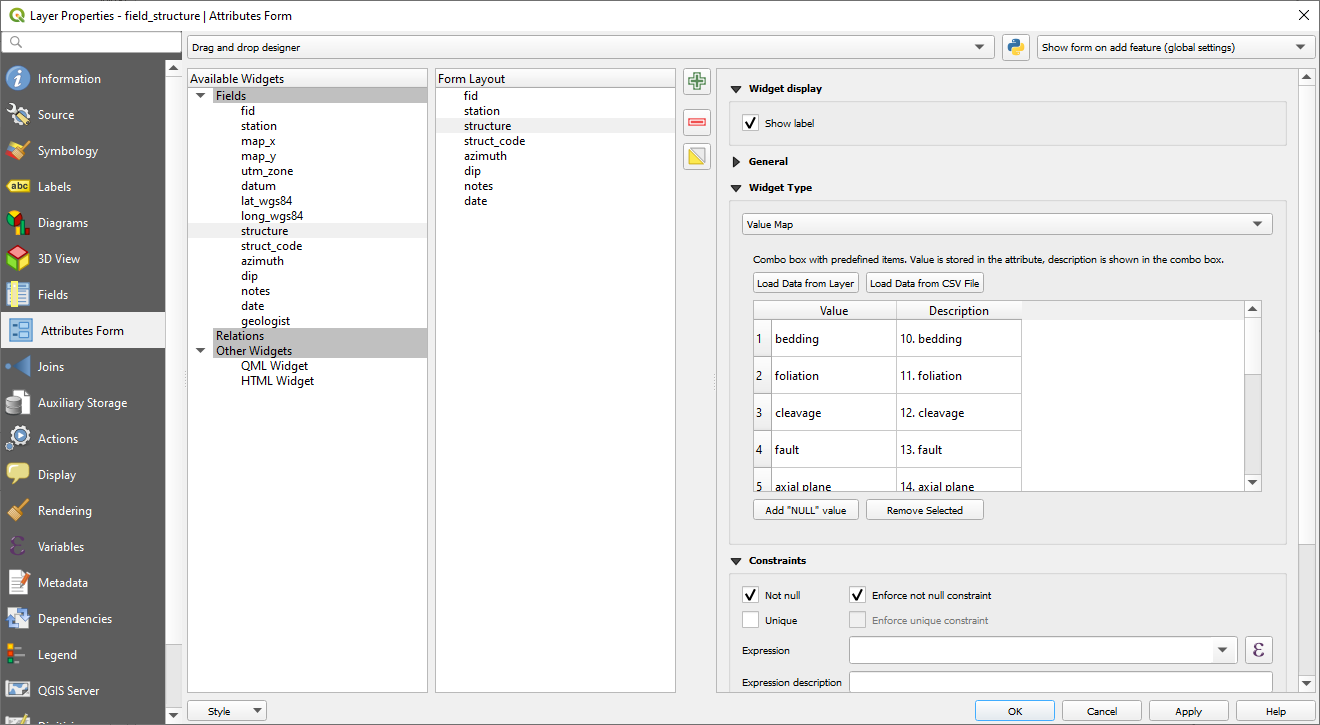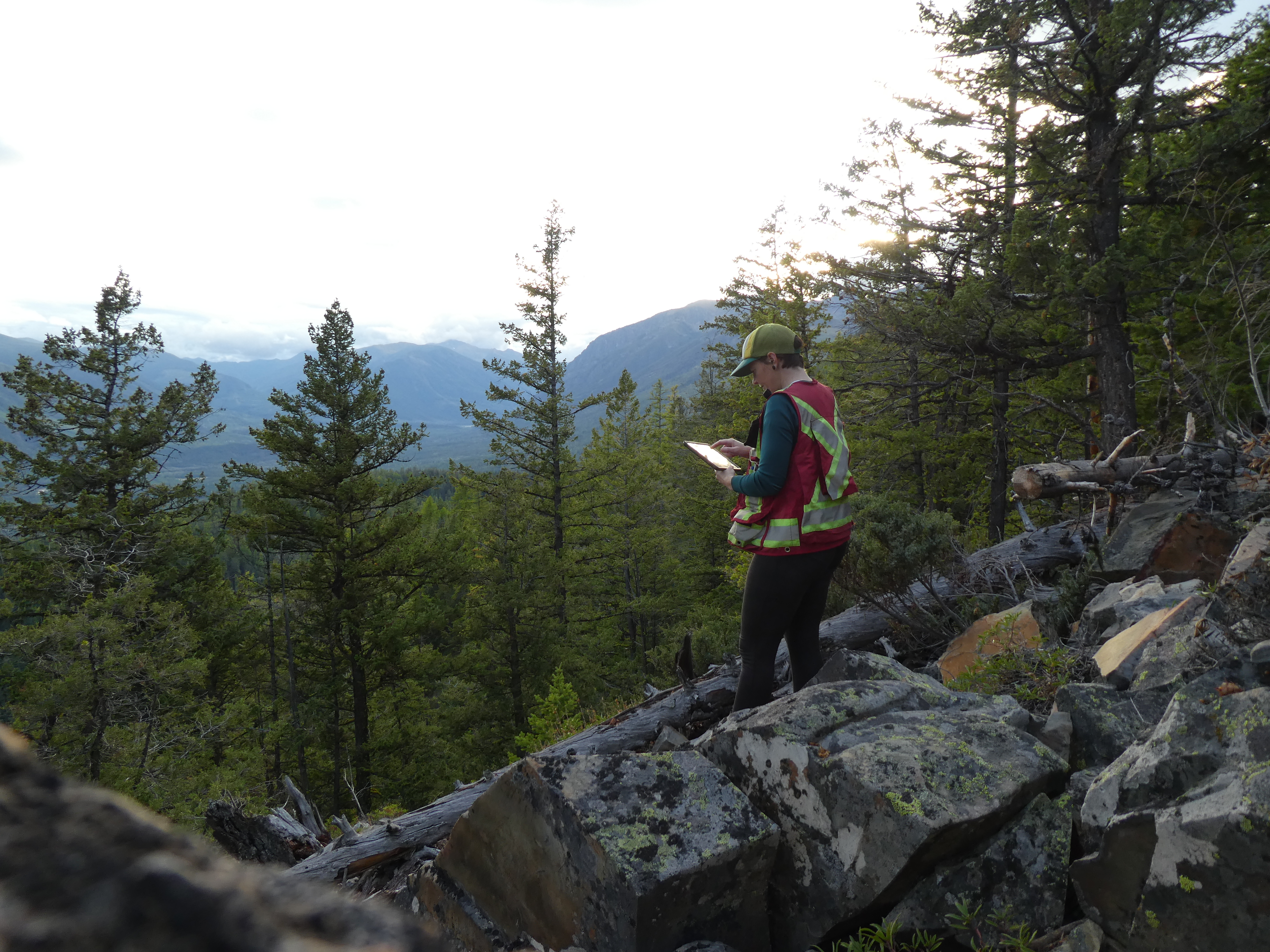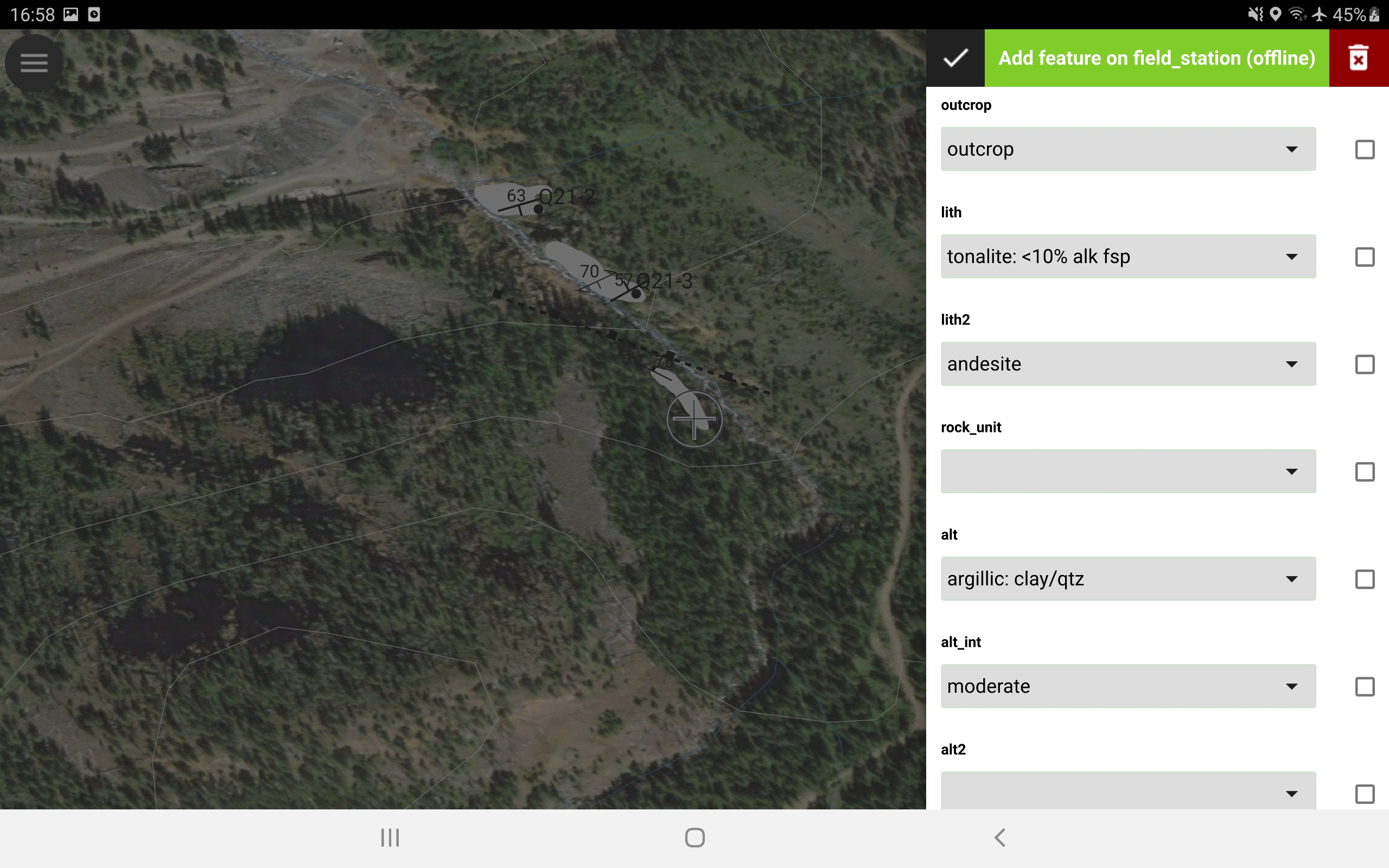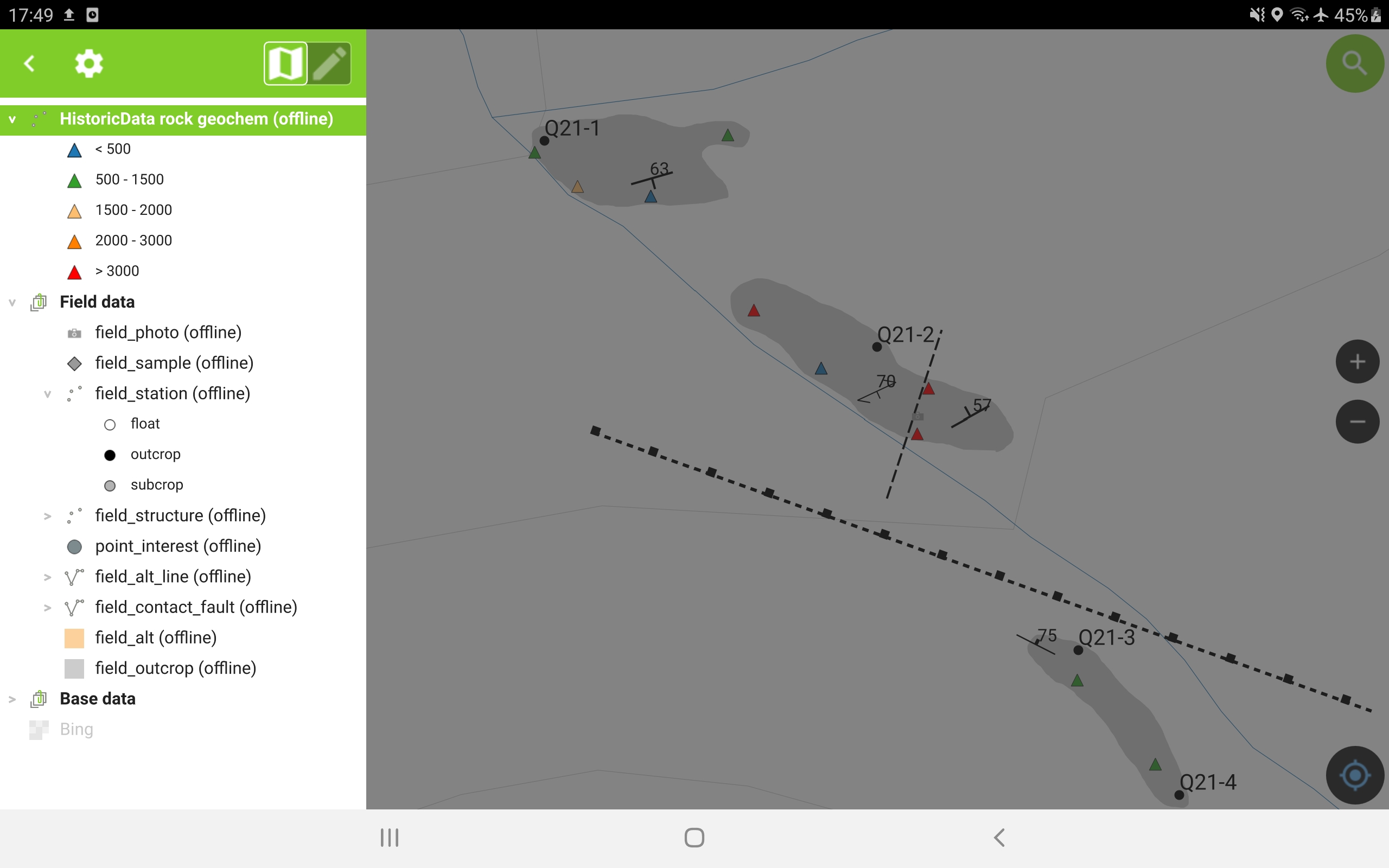Mappatura geologica con QField¶
Di Rohanna Gibson, geologo strutturale, Terrane Geoscience
Obiettivo¶
Per raccogliere nuovi dati sulla geologia del sottosuolo e visualizzare i dati geoscientifici esistenti sul campo. La mappatura geologica viene completata utilizzando mappe cartacee e/o dispositivi digitali per la raccolta dei dati. L'obiettivo è migliorare il flusso di lavoro di mappatura geologica inserendo i dati direttamente sul campo, creare dati di qualità con termini coerenti e fare riferimento ai dati geologici esistenti sul campo.
Preparazione del progetto¶
Prior to starting in QField, a geologic mapping GeoPackage was designed to collect vector data including point station, structure, photo, and sample layers as well as line and polygon layers for contacts, faults, alteration, and geology. Attribute fields are customized for ease of data entry and data quality assurance using value maps, defaults (value or expression), and constraints within the Attributes Form. For example, the structural layer includes:
Coordinate
Fields with default value x and y coordinates from GPS data.
Tipo di struttura
Value map (drop down list) with structural features (e.g., bedding, cleavage, lineation), set with a "not null" constraint.
Azimut e dip
Integers with range set from 0-360 and 0-90, respectively.
Data
Valore predefinito data e ora attuale di creazione dell'elemento
La simbologia e le etichette sono personalizzate per ogni layer, compresi i simboli SVG incorporati per le caratteristiche strutturali che vengono ruotate con il campo azimutale.
In addition to field data, base maps and historic data are compiled into GeoPackage for reference. Base maps include vector topographic data and raster orthophotos. Raster geophysical data and vector geochemical data are included if available, as well as historic geologic mapping. Map themes are designed to quickly toggle between geologic mapping, geophysics, and geochemistry views.
Raccolta dei dati¶
Field data collection includes adding point data for map stations, structures, photos, and samples. Polygons and lines are drawn freehand with a stylus or adding vertices manually.
Location and direction of travel are displayed using internal device GPS (or external GPS device linked via Bluetooth), historic vector and raster layers can be viewed relative to location. Current and historic vector layers can be searched and viewed in QField.
Field data are synchronized in QGIS followed by a short data clean up and verification process. The QGIS project is then exported back to QField for additional data collection.
Structural data collection may be upgraded with future development of a geologic compass feature. https://github.com/opengisch/QField/issues/1882
Risultati¶
Final geologic maps and analysis are prepared directly from field data sets with no need to digitize field data. Depending on proficiency and type of mapping, the QField geologic mapping workflow takes approximately the same amount of field time as manual (paper) mapping and drastically reduces office data digitization time. Additionally, historic data are easily referred to in the field, allowing for real time interpretation and targeted field work. Maps and attribute tables can be exported directly from QField or the QGIS project for daily field updates or communication between working groups.
QField allows for data integrity with customizable attribute fields and database compatibility. Field data quality assurance can be built in during project design, ensuring attributes are consistent between users and reducing human error with constraints and default values.



